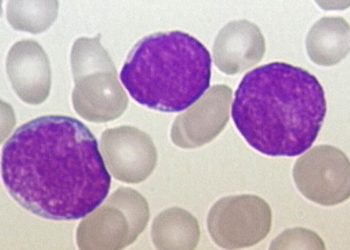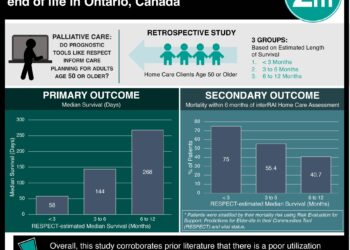Parental hopes for critically ill children are dynamic
1. The most commonly reported parental hopes for critically ill children fell within the domains of quality of life, concerns regarding physical body, future well-being, and length of life.
2. Over a 20-month time period, domains showing the largest increases in parental hope reports included quality of life, future well-being, and concerns regarding a broader meaning of their child’s illness.
Evidence Rating Level: 1 (Excellent)
Study Rundown: Parental hopes for their children’s illness may help inform the ways in which medical providers support and counsel families. These hopes may change over time as parents develop a better understanding of their child’s illness. In this mixed-methods, prospective cohort study, researchers described the hopes of parents with critically ill children across several domains and time points during a 20-month period. “Hopes” were defined as any parental response when asked to provide “3 major goals or hopes” for their child during an interview. As a secondary question, researchers evaluated the same hope domains in a subgroup of parents whose child died during the study period. Results indicated that, out of the 9 different hope domains, the most commonly reported hopes pertained to a child’s quality of life, physical health, future well-being, and medical care. While gradual changes over time were noted in the most prevalent domains, these same domains remained the most frequently reported at the study’s conclusion. Of note, significant changes in hope domains were present at the individual level. In subgroup analysis of parental hopes for children who died, hopes tended to mirror those of parents whose children survived and did not significantly change as the child’s death was imminent. Limitations of the study included attrition, racial and patient age-related homogeneity, and a lack of accounting for the child’s diagnosis or acuity versus chronicity of illness in the analysis. For pediatricians, this study highlights the most common domains of parental concerns of critically ill children, and illustrates that these domains are subject to change over time.
Click to read the study published today in Pediatrics
Relevant Reading: Parental decision-making preferences in the pediatric intensive care unit
In-Depth [prospective cohort]: In this study, conducted at the Children’s Hospital of Philadelphia, 295 parents with children in the neonatal intensive care unit (ICU) pediatric ICU, cardiac ICU, or on the palliative care service were approached to participate. The final study included 200 parents of 158 children who were interviewed at 4-month intervals until the 20-month end-point. Parents were defined as any adult with primary medical decision-making responsibilities for the patient. Parents were excluded if they were non-English speaking, emotionally overwhelmed per physician judgement, had lost custody rights, and/or if the child had experienced a non-accidental injury. Hope categories included: cure/miracle, length of life, physical body, medical care, medical knowledge, pain and suffering, quality of life, broader meaning, and future well-being. Parents’ responses were categorized by 3 coders, who had an initial agreement on 56% of the hopes coded, with disagreements resolved afterwards. At each interview, any addition of a hope with new or different content was categorized as a change, and there was initially 93% agreement between coders on these events, with disagreements resolved afterwards.
At baseline, the most common reported hopes fell within quality of life (75%), physical body (69%), future well-being (47%), and medical care (34%), with <20% hope reports for the remaining domains. At the 20-month interview, this trend persisted with the most common hopes reported in the domains of quality of life (84%), physical body (70%), future well-being (64%), and medical care (35%), with <20% hope reports for the remaining domains. The most notable increases in cumulative hope changes were seen in an increase report of hopes in quality of life and future well-being. In a subgroup of parents (N=47) whose children died during the study, 10 completed the 3-, 6-, 8- and 12- month visits and 1 completed the 16-month visit. The order of domain preference did not significantly change as the child’s death neared, however, fewer reported the quality of life hope domain (100% to 77%).
Image: PD
©2018 2 Minute Medicine, Inc. All rights reserved. No works may be reproduced without expressed written consent from 2 Minute Medicine, Inc. Inquire about licensing here. No article should be construed as medical advice and is not intended as such by the authors or by 2 Minute Medicine, Inc.







